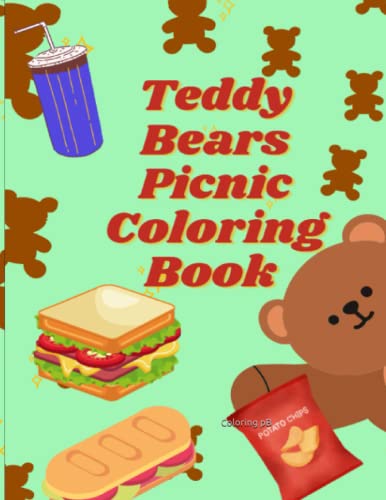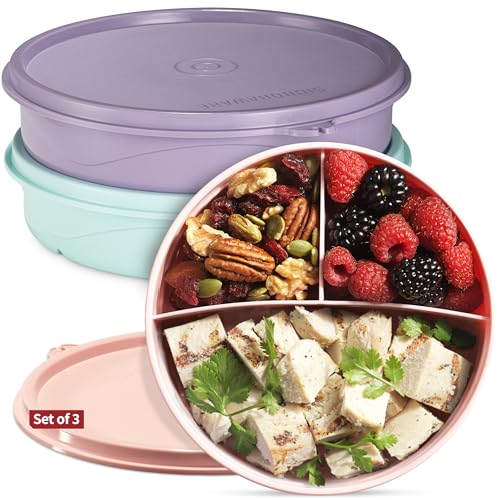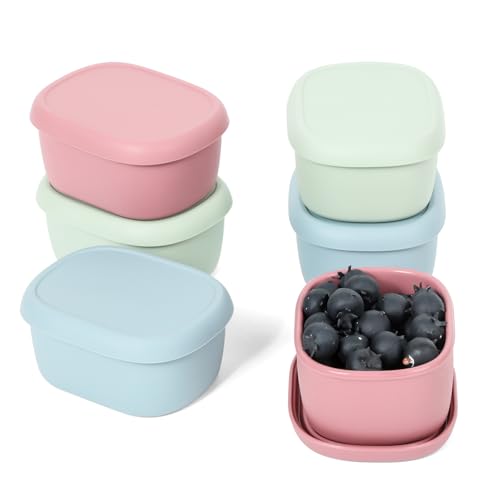Kid picnics offer a delightfully engaging approach to outdoor dining, combining the natural appeal of eating outside with the playful joy of child-centered activities. These vibrant celebrations bring together appealing finger foods, interactive dining elements, and age-appropriate entertainments in settings that transform ordinary backyards, local parks, or school outings into extraordinary childhood memories that nurture both connection and independence.
Let’s explore how to create the perfect kid picnic that balances playful enjoyment with practical outdoor success!
Kid Picnic Planning Fundamentals
Establish the perfect foundation for your child-centered outdoor celebration.
Understanding Modern Kid Picnic Approaches
Creating enjoyable yet practical child-centered outdoor dining:
- Attention Span Consideration: Appropriate duration expectations
- Independence-Safety Balance: Supervised self-sufficiency opportunities
- Mess Management Strategy: Practical approaches to inevitable spills
- Flexible Planning Priority: Adaptability to changing child needs
- Simplicity Focus: Manageable elements for young participants
- Engagement Enhancement: Multi-sensory dining experiences
- Adult Enjoyment Integration: Parallel pleasure for supervising grown-ups
“Kid picnics require a thoughtful balance between playful delight and practical management,” shares Jamie, who specializes in child-centered outdoor events. “We approach these gatherings with what we call ‘managed joy’—carefully creating experiences that feel wonderfully free to children while incorporating invisible guardrails that prevent chaos. The most successful kid picnics combine simple, manageable food options with complementary activities, maintain flexibility to accommodate fluctuating attention spans, and incorporate natural breaking points that allow for both eating and movement. When properly planned, these events create the magical childhood feeling of special independence while maintaining the practical oversight that keeps the experience positive for everyone involved.”
Location Selection Strategy
Finding the perfect setting for child-friendly outdoor dining:
- Safety Assessment Priority: Age-appropriate environment evaluation
- Restroom Accessibility Consideration: Necessary facilities within reach
- Natural Play Element Integration: Complementary environment features
- Shade Availability Focus: Sun protection for sensitive skin
- Space Configuration Evaluation: Appropriate boundaries and visibility
- Cleanliness Verification: Suitable ground conditions for seated dining
- Distance Management Planning: Appropriate proximity to necessities
“Selecting the right location creates the essential foundation for kid picnic success,” explains Casey, who plans family outdoor events. “We’ve found the most effective approach is what we call ‘playful pragmatism’—identifying spaces that excite children’s imagination while meeting practical supervision needs. We particularly recommend seeking locations with natural boundaries that create psychological containment without imposing obvious limits, clean ground surfaces suitable for seated dining, and built-in interest features like playground equipment, gentle hills, or water features that complement rather than compete with the picnic itself. The ideal kid picnic location balances novelty with comfort—providing enough interest to feel special while remaining familiar enough to feel secure, especially for younger children who may find overwhelming environments distracting from the eating experience.”
Age-Appropriate Planning Strategy
Adapting approaches for developmental stages:
- Toddler Consideration Focus: Simple, contained experiences
- Preschooler Adaptation Strategy: Interactive, imaginative elements
- Early Elementary Approach: Increased independence with parameters
- Older Child Planning: Challenge and responsibility integration
- Mixed-Age Consideration: Tiered options for diverse groups
- Developmental Need Recognition: Meeting children where they are
- Appropriate Challenge Balance: Stretching capabilities without frustration
“Kid picnic success depends heavily on aligning expectations and offerings with developmental capabilities,” shares Jordan, who studies child nutrition environments. “We develop what we call ‘age-aligned approaches’—systematically adapting experiences to match children’s changing abilities and interests. For toddlers, we recommend simple, contained picnics with limited duration, minimal choice that prevents overwhelm, and adult-adjacent seating that provides security. Preschoolers benefit from added imaginative elements—perhaps a teddy bear picnic theme or special serving approaches—while maintaining portion control and mess management. Early elementary children can handle more complex picnic setups with greater independence in both food selection and activity participation, while older children often enjoy taking ownership roles in planning, preparing, or managing aspects of the experience. The most effective mixed-age picnics provide tiered options that allow different-aged children to engage at appropriate levels while sharing the same overall experience.”
Kid Picnic Food
Child-appealing cuisine designed for outdoor success.
Kid picnic cuisine focuses on creating appealing, manageable options that balance nutrition with child appeal while minimizing outdoor dining challenges. The ideal approach prioritizes independence-appropriate selections, simplified eating mechanics, and presentation approaches that naturally enhance appeal without creating excessive preparation demands.
| Finger Food Favorites | Kid-Friendly Fruits & Veggies | Dipping Options | Simple Sweet Finishes |
|---|---|---|---|
| Mini Sandwiches | Watermelon Cubes | Hummus | Fresh Berries |
| Cheese Cubes | Apple Slices | Ranch Dip | Graham Crackers |
| Turkey Roll-Ups | Carrot Sticks | Guacamole | Frozen Yogurt Tubes |
| Pita Triangles | Cucumber Wheels | Cream Cheese | Animal Cookies |
| Chicken Nuggets | Grape Tomatoes | Nut Butter | Mini Muffins |
| Hard-Boiled Eggs | Strawberries | Yogurt Dip | Fruit Leather |
| Mini Meatballs | Sugar Snap Peas | Mild Salsa | Rice Krispie Squares |
| Quesadilla Triangles | Orange Segments | Hummus | Banana Bread Slices |
Creating Kid Picnic Food Successfully
Techniques for appealing yet practical outdoor children’s dining:
- Self-Management Priority: Foods children can handle independently
- Mess Minimization Focus: Selections that limit cleaning challenges
- Familiar-New Balance: Comfortable favorites alongside careful introductions
- Nutrition Integration Strategy: Healthy options in appealing formats
- Temperature Stability Consideration: Foods safe at ambient temperatures
- Allergen Awareness Planning: Appropriate options for common restrictions
- Visual Appeal Enhancement: Presentation that naturally attracts interest
“I approach kid picnic food with what I call ‘strategic simplicity’—creating cuisine that solves outdoor dining challenges while delivering genuine appeal to young eaters,” shares Sam, who specializes in children’s food experiences. “We emphasize selecting varieties that maximize independence—foods that children can manage without adult assistance—while minimizing mess potential through thoughtful preparation techniques like cutting grapes in half to prevent rolling, pre-dipping items that might otherwise create spills, and packaging foods in individually manageable containers that contain potential messes. The most successful kid picnic menus balance familiar favorite foods that ensure eating success with carefully selected introductions that expand experiences without creating resistance, all while maintaining appropriate nutrition that fuels rather than hinders active outdoor play. Simple presentation enhancements—like using cookie cutters on sandwiches or creating rainbow arrangements of fruits—add appeal without requiring elaborate preparation that defeats the relaxed purpose of picnic dining.”
Kid Picnic Activities
Engaging entertainments that enhance outdoor dining enjoyment.
Kid-friendly activities create memorable engagement opportunities that complement outdoor dining, transforming simple picnics into immersive play experiences. The ideal approach incorporates elements that are transportable, weather-resistant, and developmentally appropriate while maintaining connection to the picnic experience rather than completely diverting from it.
| Pre-Meal Activities | During-Meal Entertainments | Post-Meal Movement | Quiet Wind-Down Options |
|---|---|---|---|
| Nature Scavenger Hunt | I-Spy Games | Freeze Dance | Cloud Watching |
| Bubble Play | Storytelling | Simon Says | Flower Pressing |
| Simple Obstacle Course | Picnic Bingo | Follow-the-Leader | Picture Books |
| Ball Games | Silly Face Contest | Nature Walk | Finger Puppets |
| Parachute Play | Show-and-Tell Items | Tag Variations | Nature Drawing |
| Chalk Drawing | Guessing Games | Duck-Duck-Goose | Playdough |
| Musical Statues | Joke Telling | Balloon Games | Quiet Sensory Bottles |
| Hula Hooping | Twenty Questions | Treasure Hunt | Gentle Yoga Poses |
Creating Engaging Kid Picnic Activities
Techniques for meaningful enjoyment that enhances rather than overtakes dining:
- Flow Enhancement Priority: Activities that complement eating rhythm
- Transition Management Focus: Movement between dining and play
- Simplicity Strategy: Entertainments requiring minimal equipment
- Multi-Age Adaptation: Flexibility for different developmental stages
- Adult Participation Consideration: Balancing supervision with facilitation
- Natural Integration Planning: Using available environment features
- Energy Management Approach: Matching activity intensity to dining timing
“I approach kid picnic activities with what I call ‘complementary play’—creating engaging experiences that enhance rather than compete with the dining purpose,” shares Alex, who specializes in outdoor child development. “We emphasize selecting activities that naturally flow around eating—perhaps quieter, seated games during the meal itself, more active play before eating to build appetite, and moderate movement afterward to aid digestion without causing discomfort. We particularly recommend incorporating activities that maintain picnic blanket proximity rather than completely dispersing the group, which helps maintain the cohesive picnic experience while providing necessary movement opportunities. The most successful kid picnic activity plans balance structured offerings with free exploration time, adult-facilitated moments with independent play opportunities, and high-energy options with quieter choices that accommodate different children’s needs and energy levels throughout the experience.”
Kid Picnic Practicalities
Essential strategies for outdoor dining success with children.
Outdoor Hygiene Management
Creating cleanliness in natural settings:
- Hand Cleaning Priority: Pre-eating sanitation solutions
- Spill Response Strategy: Quick-access cleanup tools
- Waste Management Planning: Appropriate collection and disposal
- Surface Sanitization Approach: Dining area cleanliness maintenance
- Bathroom Navigation Consideration: Facility access planning
- Allergy Cross-Contamination Prevention: Appropriate separation strategies
- Natural Element Management: Strategies for inevitable dirt interaction
“Kid picnic hygiene requires thoughtful planning that balances practical cleanliness with the natural messiness of outdoor childhood,” explains Cameron, who designs family outdoor experiences. “We begin with what we call ‘strategic sanitation’—creating systems that maintain necessary cleanliness without imposing unrealistic standards that diminish enjoyment. We recommend establishing clear hand-cleaning procedures appropriate to your setting, whether that’s portable hand sanitizer for quick cleanup, wet wipes for more thorough cleaning, or bringing water jugs with soap for proper washing when possible. Having designated cleanup tools accessible throughout the picnic—perhaps a small bag containing wipes, extra napkins, and a stain stick—allows for immediate response to inevitable spills without major disruption. The most successful kid picnic hygiene approaches balance necessary cleanliness with realistic expectations—maintaining standards that protect health while accepting the reality that outdoor dining with children necessarily involves some mess that’s part of the joyful experience rather than a problem to solve.”
Weather Adaptation Strategy
Preparing for environmental variables with children:
- Temperature Management Priority: Appropriate layering for variable conditions
- Sun Protection Focus: Multiple defense strategies for sensitive skin
- Wind Consideration: Securing lightweight items and children’s comfort
- Rain Contingency Planning: Appropriate alternatives or adaptations
- Insect Management Strategy: Prevention and response approaches
- Ground Condition Adaptation: Solutions for various surfaces
- Seasonality Integration: Appropriate adjustments for different times of year
“Effective kid picnic weather planning transforms potentially uncomfortable conditions into manageable variables through thoughtful preparation,” shares Quinn, who guides family outdoor adventures. “We develop what we call ‘flexible protection’—creating systems that adapt to changing conditions while maintaining the outdoor experience whenever possible. We recommend dressing children in easily adjustable layers that can be added or removed as temperatures fluctuate, bringing multiple sun protection options including hats, sunscreen, and portable shade devices appropriate to your location, and packing simple wind management tools like tablecloth clips, extra blanket anchors, and lightweight windbreakers that maintain comfort without bulky preparation. The most successful weather adaptation approaches balance necessary protection with maintaining the outdoor advantages that motivated the picnic choice, perhaps incorporating weather variables into the experience itself through cloud-watching activities during cooler moments or puddle-jumping celebrations with appropriate gear if light rain appears.”
Special Kid Picnic Variations
Adapt your approach for different childhood experiences.
Themed Character Picnics
Creating imaginative experiences around favorite characters:
- Character Integration Priority: Appropriate themed elements
- Licensing Consideration Focus: Balancing commercial with homemade
- Imagination Enhancement Strategy: Interactive character-based play
- Developmentally Appropriate Balance: Meeting children where they are
- Budget Management Planning: Cost-effective themed approaches
- Multi-Interest Accommodation: Inclusive options for diverse preferences
- Interest Expansion Opportunity: Growing beyond screen-based familiarity
“Themed character picnics create magical childhood experiences when thoughtfully designed to enhance rather than commercialize the outdoor dining adventure,” explains Riley, who specializes in children’s themed events. “We approach these celebrations with what we call ‘expanded imagination’—using familiar characters as starting points for broader creative play rather than rigid commercial experiences. We particularly recommend selecting a few strategic themed elements—perhaps character-shaped sandwiches, a themed banner, or a few decorative touches—while allowing the natural outdoor setting to provide most of the environment rather than attempting elaborate recreations better suited to indoor parties. For particularly successful character picnics, consider incorporating interactive storytelling that places the children themselves as active participants in adventures with their favorite characters, creating simple costume elements like paper masks or capes that enhance imaginative play, and balancing character-specific activities with general outdoor enjoyment that prevents the theme from overwhelming the picnic pleasure.”
Classroom Picnic Outings
Creating educational yet enjoyable group dining experiences:
- Group Management Priority: Appropriate supervision strategies
- Educational Integration Focus: Learning opportunities within enjoyment
- Inclusive Consideration Strategy: Accommodating diverse needs
- Dietary Restriction Navigation: Managing various food requirements
- Parent Helper Coordination: Clear role definition and support
- Transportation Management Planning: Movement logistics for groups
- Return Transition Approach: Smooth re-entry to classroom setting
“Classroom picnic outings offer extraordinary opportunities for combining educational objectives with refreshing outdoor experiences when properly structured for group success,” shares Morgan, who coordinates school outdoor programs. “We develop what we call ‘joyful learning’—creating picnic experiences that accomplish curriculum goals through enjoyable outdoor engagement. We recommend establishing clear connection between the outing and specific learning objectives—perhaps a nature scavenger hunt that reinforces science concepts, measurement activities that develop math skills through practical application, or journaling prompts that encourage descriptive writing inspired by the outdoor setting. The most successful classroom picnics balance necessary structure for group management with appropriate freedom that distinguishes the experience from typical school days, perhaps using buddy systems or small group assignments that maintain supervision while reducing the institutional feeling of standard line formation, creating nature-based learning stations that allow movement between educational activities, and incorporating reflection opportunities that help children process both social and academic aspects of the experience.”
More Creative Kid Picnic Inspiration
Looking for additional child-friendly outdoor dining ideas? Here’s a collection of creative concepts!
| Creative Themes | Novel Food Presentations | Unique Activity Integrations | Special Enhancement Ideas |
|---|---|---|---|
| Teddy Bears’ Picnic | Rainbow Fruit Skewers | Nature Art Installations | Flower Crown Stations |
| Fairy Garden Dining | Food Face Creations | Outdoor Science Experiments | Binocular Wildlife Watching |
| Dinosaur Expedition | Sandwich Shapes | Nature Photography | Hammock Reading Nooks |
| Under the Sea Adventure | Veggie Train Arrangements | Rain Gutter Boat Racing | Bubble Machine Stations |
| Space Explorer Mission | Fruit Flower Bouquets | Cloud Identification | Portable Water Play |
| Safari Adventure | Bento Box Designs | Animal Movement Games | Magnifying Glass Exploration |
| Pirate Treasure Hunt | Palm Tree Fruit Displays | Treasure Map Creation | Sensory Walking Paths |
| Secret Garden Party | Butterfly Snack Bags | Flower Planting | Bird Feeding Stations |
Conclusion: Celebrating Childhood Through Outdoor Nourishment
Kid picnics create memorable outdoor experiences through the perfect combination of child-centered food approaches, engaging complementary activities, and thoughtfully managed practical considerations that transform ordinary outdoor dining into extraordinary childhood memories.
What makes kid picnics extraordinary is their ability to combine nourishment, nature, and play in experiences that create formative childhood memories while developing independence, social skills, and appreciation for outdoor environments. When thoughtfully planned with attention to both childlike wonder and practical management, these outdoor gatherings offer uniquely effective opportunities for children to experience the special joy of dining beyond walls while building connections with both nature and companions.
So prepare your child-friendly picnic blanket, pack your finger foods and simple activities, and choose your perfect kid-accessible location for an afternoon of outdoor enjoyment. The joyful experiences shared during these childhood picnics often become cherished memories that extend far beyond a single day of outdoor dining and help develop lifelong appreciation for both natural settings and shared meals.





























